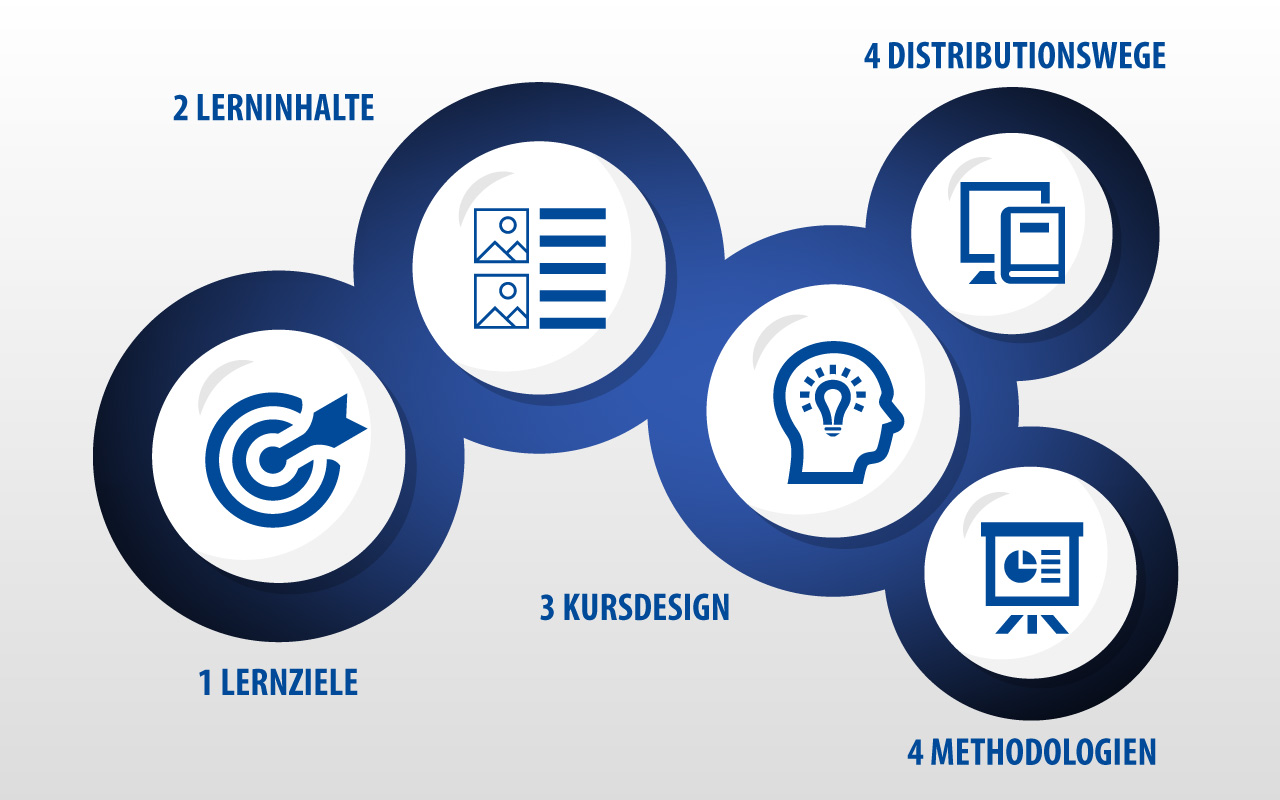Blended learning models have existed not only since the “Corona crisis” – but now they seem to be gaining in importance.
With the right mix of didactic design, methodology and training formats as well as a clear strategy regarding distribution, scaling and selection of suitable tools, blended learning courses can go far beyond classroom training.
Inform yourself in the article “Learning to rethink: method-mix in “corona times” about the blended learning approach CBTL follows.

Learning to think in new ways: Modern mixed-mode methods in “Corona times”
As a result of the Corona crisis, many companies and training providers had to replace their classroom training courses with digital learning formats at short notice. Does this now provide the opportunity to permanently anchor modern approaches to education?

Return as quickly as possible to the “old normal” of classroom training? Continue implementing the conversion of classroom training into webinars? Or go even further down the road of digitalisation, e.g. towards modern learning scenarios with flexible and adaptable mixing of methods? Many companies ask themselves these questions after their first experiences of training method digitalisation during contact restrictions. A valuable component of a longer-term strategy for continuing professional development, can be blended learning approaches with a focus on digital formats. Such approaches offer companies flexibility and scalability when implementing training. At the same time, they provide learners with a varied and interactive learning experience. But what needs to be taken into account during planning and implementation?
First things first: the learning objectives..
The basis for the design of successful blended learning approaches is a clear analysis of the target audience and general environment, as well as a clear definition of learning objectives. Which competences should the participants acquire? What behavioural changes should the training bring about? Based on this, the learning content is identified which either directly links to the learning objectives (e.g. essential factual knowledge) or support them (management models, sales approaches, etc.).
… then the methodology
The next step is to decide which methods and technologies are to be used to optimise how the respective learning objectives and content are delivered and how the individual elements are to be linked to each other. For example, self-study modules are ideally suited to impart basic knowledge interactively. Learners can learn at their own pace, independent of time and place, and receive feedback on their learning progress at any time through integrated exercises and quiz questions. Building on this content, learning can then be deepened in a webinar and discussed with other learners and the lecturers. In individual or group projects, learners then apply the knowledge and skills they have acquired in practice. Asynchronous and synchronous communication possibilities, if necessary moderated by a tutor, support the development of a learning community and interaction between the participants.

Does it scale?
A second criterion, when deciding on an approach to training, is the question of scalability. Webinars are only truly interactive if the learners participate live and the group sizes are kept small. Interactively designed e-learning modules, on the other hand, scale almost indefinitely if good exercise and feedback mechanisms are built in, which can then be combined with discussions or partner work in forums or chats, for example.
Agile creation

Efficient design and production workflows are essential, especially in an economic environment where general conditions and training requirements can change rapidly. The selection of the right tools, whether in the area of web conferencing software, LMS or e-learning authoring tools, is essential in this context. Thus, online-based e-learning authoring tools such as EVOLUTION³ from CBTL greatly enhance real-time collaboration and can massively accelerate review and approval processes in addition to the creation process. The online availability simplifies data exchange between departments and agencies. Content management features, with the option to manage different content, design and language variations, make it easy to quickly adapt, reuse and translate content. And with visually and interactively well thought-out templates, attractive and high-quality course materials can be created in no time at all.
Conclusion
The right mix of instructional design, methodology and training formats, as well as a clear strategy regarding distribution, scaling and selection of suitable tools, are of crucial importance for blended learning courses. These blended courses are not only a substitute for classroom training, but also go far beyond them in their possibilities for supporting learning. A modern blended approach enables companies to create a flexible and resilient strategy for continuing professional development.